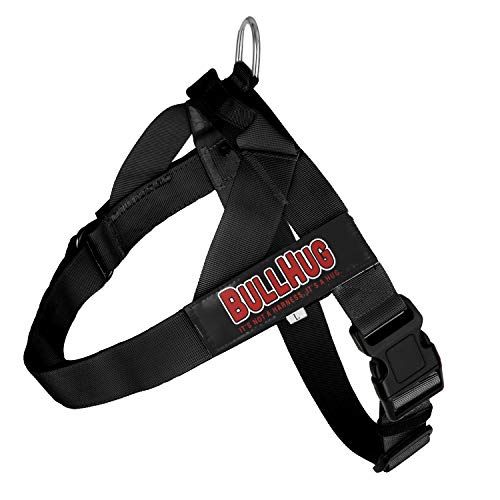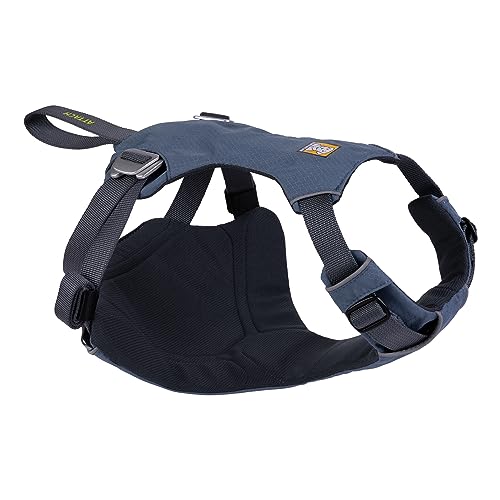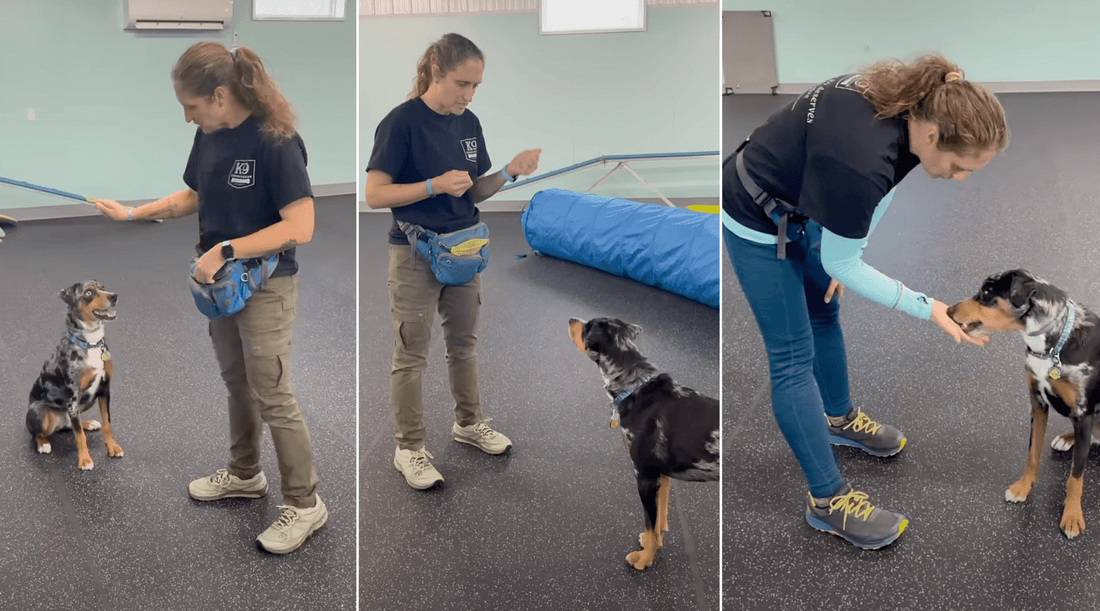Training your dog to be obedient can transform your daily life. Imagine enjoying walks without pulling, having your dog listen the first time you call, and feeling confident in any situation.
You might think it’s hard or time-consuming, but with the right approach, anyone can teach their dog good manners. This guide will show you simple, effective steps to train your dog’s obedience. Keep reading to discover how you can build a stronger bond and create a happier, well-behaved companion.

Credit: www.youtube.com
Choosing The Right Training Tools
Choosing the right training tools makes dog obedience training easier and more effective. The right equipment helps your dog understand commands faster. It also keeps training sessions fun and safe. Selecting tools that suit your dog’s size and personality matters most. Quality and comfort play a big role in your dog’s response to training.
Collars And Leashes
Pick collars and leashes that fit well and feel comfortable. A flat collar works for most dogs. Avoid collars that are too tight or loose. Leashes should be sturdy but lightweight. Nylon or leather leashes offer good control. Retractable leashes provide freedom but less control. Use a leash that suits your training style and your dog’s behavior.
Training Treats
Training treats motivate dogs to follow commands. Choose small, soft treats that dogs can eat quickly. Treats should have a strong smell and taste to catch attention. Use healthy treats to keep your dog’s diet balanced. Keep treats handy during training but don’t give too many. Treats help reward good behavior instantly.
Interactive Toys
Interactive toys keep dogs engaged during training. Toys that dispense treats encourage problem-solving. Use toys that match your dog’s size and chewing strength. Puzzle toys improve mental skills and focus. Toys reduce boredom and make training more fun. Rotate toys to keep your dog interested and active.

Credit: www.facebook.com
Establishing Basic Commands
Teaching your dog basic commands is the foundation of good behavior and strong communication between you and your pet. These commands help keep your dog safe and make daily life easier. Consistency and patience are key as you guide your dog through each new word and action.
Sit And Stay
The “Sit” command is often the first one dogs learn because it’s simple and sets the tone for control. Start by holding a treat close to your dog’s nose, then slowly move it upward. As your dog follows the treat with their eyes, their bottom naturally lowers to the ground—once seated, say “Sit” clearly and reward immediately.
“Stay” builds on “Sit” by teaching your dog to hold their position. After your dog sits, open your palm toward them and say “Stay.” Take a step back, then return to reward your dog if they hold still. Gradually increase the distance and time, but always keep your tone calm and encouraging.
Come And Heel
Calling your dog to come is essential for safety. Use a happy, upbeat voice and say “Come” while gently pulling on the leash or clapping your hands. When your dog reaches you, reward with treats and praise to make the experience positive.
“Heel” teaches your dog to walk closely by your side without pulling. Begin during short walks, stopping whenever your dog pulls ahead. Use the command “Heel” and guide them back to your side with a treat. This command requires patience, but it drastically improves your walking experience.
Leave It And Drop It
“Leave It” helps prevent your dog from picking up dangerous or unwanted items. Hold a treat in your closed hand and say “Leave it.” When your dog stops trying to get the treat and pulls away, reward with a different treat. This teaches impulse control and safety.
“Drop It” is useful when your dog already has something in their mouth that they shouldn’t. Offer a treat or toy in exchange and say “Drop it.” Once the dog releases the item, immediately reward them. This command can protect your dog from swallowing harmful objects.
Positive Reinforcement Techniques
Positive reinforcement techniques focus on encouraging your dog to repeat good behavior by offering rewards they value. This approach builds trust and motivation without fear or punishment. It’s about creating a positive learning environment where your dog feels eager to learn and please you.
Rewarding Good Behavior
Catch your dog doing something right and reward immediately. Use treats, toys, or affection—whatever your dog loves most. For example, if your dog sits on command, offer a tasty treat right away to link the behavior with a positive outcome.
Try varying rewards to keep your dog interested. Sometimes a favorite toy works better than treats. What reward does your dog respond to best?
Consistent Praise
Words of encouragement matter just as much as tangible rewards. Use a happy, upbeat tone to say “Good job!” or “Well done!” every time your dog follows a command. This helps your dog associate your voice with approval.
Consistency is key. If you only praise sometimes, your dog may get confused about what’s expected. Have you noticed your dog’s excitement when you cheer them on?
Timing And Frequency
Timing is crucial for effective reinforcement. Deliver rewards within seconds of the desired behavior so your dog makes the connection quickly. Delaying rewards can confuse your dog and weaken training.
Frequent short training sessions work better than long, infrequent ones. Aim for multiple 5-10 minute sessions daily to keep your dog focused and motivated. How often do you currently train your dog?
Addressing Behavioral Challenges
Addressing behavioral challenges is a crucial part of training your dog to be obedient. These issues can disrupt your training progress and affect your daily life together. Tackling them early with clear strategies helps build a stronger bond and a more balanced pet.
Managing Aggression
Aggression can be alarming, but it often signals fear or frustration. Start by identifying triggers—are certain people, animals, or situations causing your dog to react?
Use calm, consistent commands and avoid punishing your dog. Instead, reward calm behavior with treats or praise. A tip from my experience: take small steps in controlled environments to help your dog feel safe and learn new responses.
If aggression persists, consult a professional trainer or vet. They can guide you on specific exercises or therapies tailored for your dog’s needs.
Reducing Anxiety
Anxiety can make obedience training difficult because your dog is too stressed to focus. Notice signs like pacing, shaking, or avoidance.
Try creating a quiet, comfortable space for your dog to retreat to when overwhelmed. Regular exercise and mental stimulation also reduce anxiety levels.
Consider calming aids such as pheromone sprays or anxiety wraps, but always pair them with positive reinforcement training. How can you make your dog feel more secure during training sessions?
Handling Excessive Barking
Excessive barking often stems from boredom, fear, or the need for attention. First, determine what triggers the barking—is it strangers, noises, or separation?
Teach a “quiet” command by rewarding silence immediately. Distractions like chew toys or puzzle feeders can keep your dog engaged and reduce barking out of boredom.
Be patient and consistent. Remember, barking is a form of communication—are you listening closely enough to what your dog is trying to tell you?
Socialization Strategies
Socialization is a key part of training obedience in your dog. It shapes how your dog reacts to the world around them and builds confidence in new situations. Without proper socialization, even the best obedience training can fall short when your dog feels stressed or scared.
Introducing New Environments
Start by taking your dog to different places gradually. Parks, busy streets, quiet neighborhoods—each offers unique sights and sounds. Watch how your dog reacts and reward calm behavior to build positive associations.
Change the environment slowly to avoid overwhelming your dog. A sudden busy market might be too much, but a short walk in a less crowded area works well. Have you noticed how your dog’s body language changes with each new place?
Meeting Other Animals
Dogs learn a lot from meeting other animals. Arrange controlled playdates with calm, friendly dogs. This helps your dog practice polite greetings and reduces fear or aggression towards others.
Include different animals if possible, like cats or small pets, to widen your dog’s comfort zone. Always supervise to keep interactions safe. Have you seen your dog’s confidence grow after a positive encounter with another animal?
Engaging With People
Introduce your dog to people of all ages and appearances. This prevents fear of strangers and helps your dog respond well during obedience training. Encourage visitors to offer treats and gentle pets to make new faces less intimidating.
Focus on calm and respectful interactions. If your dog shows signs of discomfort, step back and try again later. How does your dog’s behavior around new people affect your ability to control them in public?

Credit: in.pinterest.com
Advanced Training Methods
Advanced training takes your dog’s obedience to a new level, challenging both their mind and body. It builds a stronger connection between you and your pet while keeping training exciting and rewarding. These methods require patience but offer great satisfaction when your dog masters complex tasks.
Agility Training
Agility training sharpens your dog’s focus and physical coordination. It involves guiding your dog through obstacle courses with tunnels, jumps, and weave poles. This kind of training boosts confidence and obedience because your dog must listen carefully to your commands under distractions.
You don’t need a fancy course to start. Use household items like chairs and broomsticks to create simple obstacles. The key is to keep sessions short and fun, rewarding each successful attempt with treats or praise.
Obedience Competitions
Competing in obedience trials tests your dog’s skills in a structured environment. These competitions require precision in commands like sit, stay, heel, and recall. Preparing for contests can sharpen your dog’s attention span and improve your communication.
Think about what motivates your dog most. Is it treats, toys, or your voice? Tailor your training to emphasize those rewards. Participating in competitions also connects you with other dog owners who can share tips and encouragement.
Trick Training
Teaching tricks is a playful way to deepen obedience and mental agility. Tricks like rolling over, playing dead, or fetching specific items demand focus and responsiveness. They also make training enjoyable and strengthen your bond.
Start with simple tricks and gradually increase difficulty. Break each trick into small steps and celebrate every little success. Have you noticed how your dog’s eagerness grows when you add new tricks to your routine?
Consistency And Patience
Consistency and patience are the backbone of training your dog in obedience. Dogs learn best when they experience the same cues and rewards repeatedly. Without steady practice and calm persistence, your dog can get confused or frustrated, slowing down progress.
Daily Practice
Training your dog every day helps build habits that stick. Short, focused sessions of 5 to 10 minutes work better than long, sporadic ones. Try fitting training moments into your routine, like practicing “sit” before meals or “stay” during walks.
Have you noticed how your dog responds differently on days you skip training? Daily practice keeps commands fresh in their mind and strengthens your communication. It also gives you regular checkpoints to celebrate small wins or adjust your approach.
Maintaining Routine
Dogs thrive on routine. Keeping training sessions around the same time and place helps your dog anticipate what’s next. This predictability reduces anxiety and makes learning smoother.
Think about your own habits—would you learn something new easily if your schedule kept changing? Your dog feels the same way. Stick to consistent commands, gestures, and rewards. This clarity helps your dog understand exactly what you expect every time.
Adjusting Expectations
Every dog learns at a different pace. If you expect too much too soon, frustration can build on both sides. Watch your dog closely and celebrate small steps forward.
Patience means accepting that some days will be harder than others. If your dog struggles with a command, break it down into simpler parts or try a different reward. Remember, progress isn’t always linear. What’s one small behavior you can praise today to encourage more?
Monitoring Progress
Monitoring your dog’s obedience training progress is essential to understand how well your dog is learning and to keep the training effective. It helps you identify what’s working and what needs change. Staying aware of progress also keeps you motivated and ensures your dog enjoys the process.
Tracking Improvements
Keep a simple log of your dog’s behavior during training sessions. Note down commands your dog responds to quickly and those that need more practice.
Use a checklist or a journal to mark daily or weekly progress. This will help you see patterns and recognize small wins.
Ask yourself: Is your dog responding more reliably to commands like “sit” or “stay”? Tracking this shows real improvement, not just hope.
Adjusting Techniques
If certain commands don’t stick, think about changing your approach. Maybe your dog learns better with treats, toys, or verbal praise. You might need shorter sessions if your dog loses focus.
Be flexible and patient. Sometimes, a tiny tweak in your tone or timing can make a big difference in how your dog understands the command.
How often do you pause to rethink your strategy? Adjusting techniques isn’t a sign of failure but a smart way to meet your dog’s unique needs.
Celebrating Milestones
Recognize every success, no matter how small. Did your dog follow a command without hesitation? That’s a win worth celebrating!
Use treats, playtime, or extra affection as rewards. This positive feedback motivates your dog to keep learning.
Remember, celebrating milestones builds a strong bond and makes training a positive experience. What’s the last achievement you and your dog celebrated together?
Frequently Asked Questions
What Is The Best Age To Start Dog Obedience Training?
The best age to start training is between 8 to 12 weeks. Early training helps build good habits. Puppies learn faster and adapt well to commands at this stage.
How Long Does It Take To Train A Dog Obedience?
Training time varies by dog breed and consistency. Basic obedience often takes 6 to 8 weeks with daily practice. Patience and repetition are key to success.
What Are The Essential Commands To Teach First?
Start with “sit,” “stay,” “come,” “down,” and “heel. ” These commands form a foundation for good behavior. They help control your dog in different situations.
How Can I Keep My Dog Motivated During Training?
Use treats, praise, and play as rewards. Positive reinforcement encourages learning and strengthens your bond. Keep sessions short and fun to maintain interest.
Conclusion
Training your dog in obedience takes time and patience. Consistency helps your dog learn faster and better. Use clear commands and reward good behavior often. Keep sessions short to hold your dog’s attention. Practice daily to build strong habits and trust.
Remember, every dog learns at its own pace. Enjoy the process and celebrate small wins. A well-trained dog makes life safer and happier. Start today, and watch your bond grow stronger.







